One year of Narendra Modi govt - Hits and Misses
One year of Narendra Modi govt - Hits and Misses
1/12
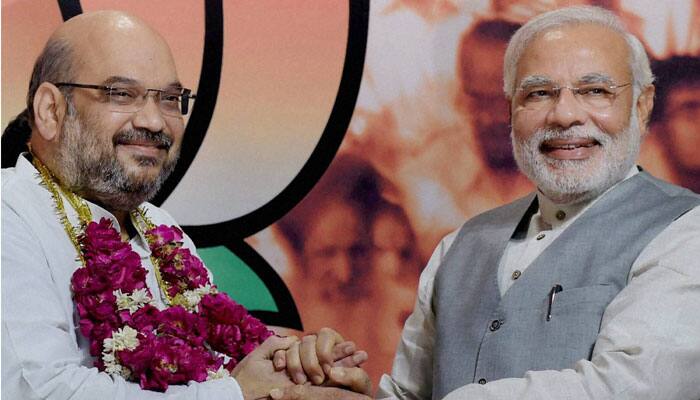
2014 was a year that Prime Minister Narendra Modi and the Bharatiya Janata Party will not forget for a long time. After the stupendous victory in 2014 General Elections, PM Modi and party chief Amit Shah led the BJP to victory in state after state, steam-rolling the Opposition along the way. The BJP created history by becoming the single largest party in Maharashtra and came to power for the first time in Haryana. And then it created a record of sorts by winning 25 seats in Jammu and Kashmir and forming the government there along with the PDP, besides forming government in Jharkhand. However, BJP and Modi's victory march was stopped by Arvind Kejriwal's Aam Aadmi Party in February 2015 when the saffron party got a rude shock as it won a mere three seats in Delhi Assembly polls. Now, it is gearing itself for the Bihar Assembly elections which are likely to be held in November this year where it aims to come to power and get back on the winning track. - Manisha Singh/Deepak Nagpal
2/12

The operation to evacuate people from war-torn Yemen by the Modi government was hailed as a major success by the media and the world at large. External Affairs Minister Sushma Swaraj and her deputy VK Singh were praised by PM Modi himself, who lauded their efforts in rescuing 1,947 nationals of 48 countries besides 4,741 Indians from Yemen during ‘Operation 'Raahat' under difficult circumstances. Not just Yemen, Modi government also brought back many Indians, including nurses from Kerala, from Iraq after large portions of the country was taken over by the dreaded Islamic State militant group. However, 39 Indian workers who went missing in Tikrit have still not been traced and that continues to be a pricking point. But moving on from there, Modi government was once again extolled for its quick response in extending relief measures and aiding in rescue operations when Nepal was hit by devastating earthquake which killed thousands and injured hundreds. PM Modi monitored ‘Operation Maitri’ himself and IAF, Indian Army, NDRF and others agencies worked relentlessly in Nepal in the aftermath of the quake. While Nepal was grateful for India’s efforts, the US said that India had acted like a global leader and the social media acknowledged Narendra Modi’s ingenuities by trending #ThankyouPM.
3/12
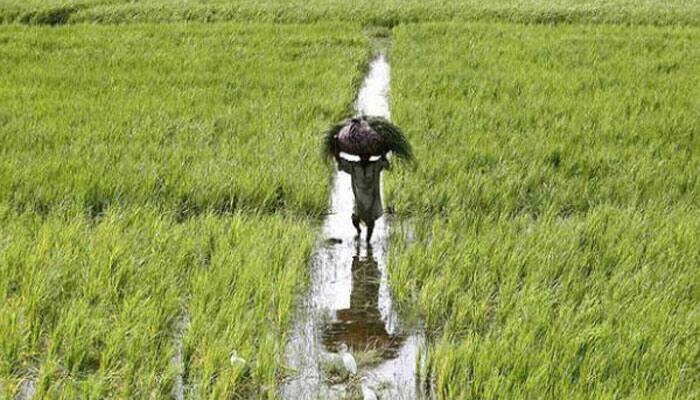
With the aim to achieve comprehensive financial inclusion, PM Modi launched one of his pet projects - Pradhan Mantri Jan-Dhan Yojana (PMJDY) in August last year, a feat even commended by the Guinness Book of World Records. This scheme aims to ensure financial access to every citizen. Under the PMJDY, RuPay debit cards are being given to the beneficiaries that will have an inbuilt accident insurance cover of Rs one lakh and an overdraft facility up to Rs 5,000. A recent World Bank report said that - till January 2015 - 125 million bank accounts have been opened under PMJDY. In order to help farmers hit by unseasonal rains and hailstorm, the Modi government announced higher compensation for crop damage and eased criteria for them to avail government support. The criteria of 50 per cent crop damage for providing compensation to affected farmers has been reduced to 33 per cent while the amount of compensation has been increased to 1.5 times. The PM also asked banks to restructure loans of affected farmers and instructed insurance companies to pro-actively settle their claims.
4/12
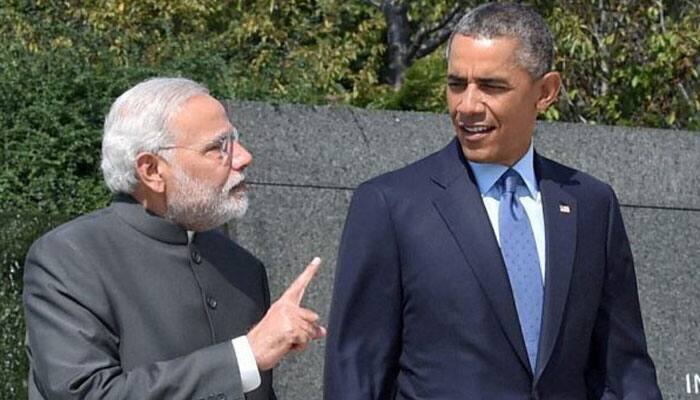
With his 'rockstar' image, PM Modi has wowed heads of governments as well as audiences, including the Indian community, wherever he has gone. Be it New York’s Madison Square Garden or the Melbourne Cricket Ground in Australia. In the initial days of his prime ministership, Modi focussed on strengthening bonds with neighbours. His first stop was Bhutan, the most unlikely of destinations. The aim, apparently, was to check growing Bhutan-China ties, and reassure the land-locked kingdom of India's continued support. The visit to Brazil for BRICS Summit saw an agreement on launching a financial institution rival to the IMF and the World Bank. Later trips saw Modi forge personal bonds with leaders like Shinzo Abe of Japan and Tony Abott of Australia. The visit to the US saw leaders of the two biggest democracies of the world - both had won electoral battles by giving hope to the people - build a personal rapport. Obama’s return visit for the Republic Day celebrations was another coup by Modi. This year, Modi’s visit to France witnessed a key deal on direct purchase of 36 Rafale fighter jets, needed badly by the Indian Air Force. In Canada, PM Modi managed to secure uranium for India’s nuclear power plants for at least five years. Another key highlight of diplomacy during PM Modi’s first year in office was Chinese President Xi Jinping’s visit to India in September. Many agreements were signed during that visit, with Xi promising $20 billion worth of Chinese investments in India over the next five years. PM Modi pays a return visit to China in May, just before the completion of his one year in office.
5/12
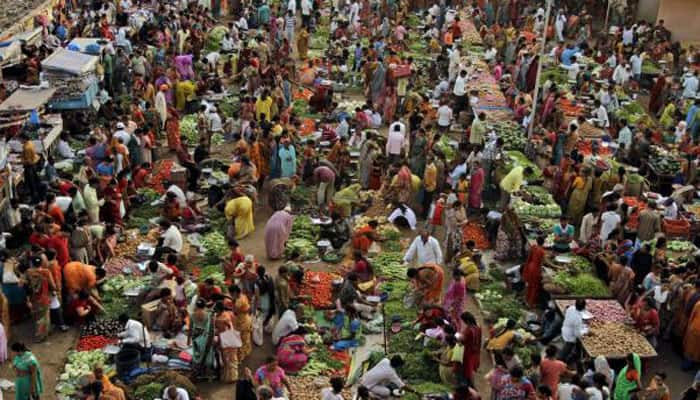
Inflation has been contained to an extent during the first year of Modi government so far, something which the Congress-led UPA had failed to do so. Inflation as measured by the consumer price index is hovering around 5%, below the Reserve Bank’s comfort level, and has hence triggered two unscheduled rate cuts over the last few months. The repo rate currently stands at 7.5%. The rate cut has also triggered revision in home loan and other credit rates, in favour of the consumer. And there’s good news on the growth front as well. After clocking 7.2% growth in 2014, the Indian economy is on course to clock 7.5% growth rate in 2015 and will surpass China, as per the IMF. The World Bank too has projected India’s growth rate at 8% in 2017. But, there is still no consensus on the revised methodology for calculating India’s GDP numbers. Further, in a positive development several rating agencies, including Moody’s, have upgraded India’s credit outlook though India's sovereign credit rating remains just one above junk.
6/12
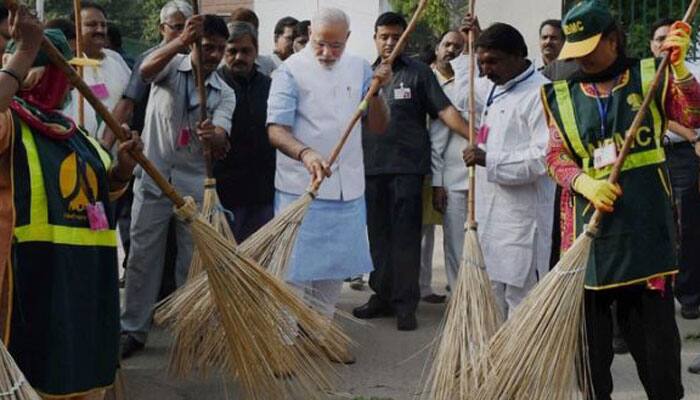
In his first year in office, Prime Minister Narendra Modi has launched several key initiatives, including Clean India Mission, Clean Ganga, Skill India and Make in India. Clean India or Swachh Bharat aims to encourage hygiene in the country. The initiative had a great start but the momentum seems to have been lost lately. However, with the target year being 2019, one has to wait and see how PM Modi realises Mahatma Gandhi and every Indian’s dream of a clean and green India. Clean Ganga Mission aims to make the holiest of holy rivers, Maa Ganga, regain its past glory. Rivers in India have been turned into drains and with this mission, the Modi government is aiming to revive Ganga as well as other Indian rivers that are the mainstay of our civilisations. Make in India is another key initiative of the Modi government that aims to turn India into a manufacturing hub. So far, the Modi government appears to have been successful in projecting India as a next destination for manufacturing and the recent Hannover trade fair in Germany could prove to be a catalyst in that direction.
7/12
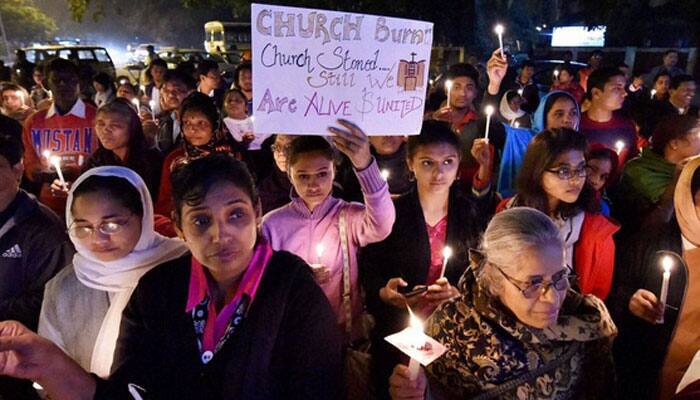
The Modi government has been under relentless attack by the Opposition over the increase in attack on churches in the national capital and also in states like Haryana and Maharashtra. The Opposition targeted the BJP-led government for failing to give protection to minorities and their religious structures. Finally PM Modi had to break his silence and come out strongly against the attacks, assuring the Christian community that the government would 'act strongly' without tolerance for fanaticism of any kind. However, controversial comments by BJP leaders gave more ammunition to the Opposition to target the Modi government, they alleged that the saffron party was showing its true colours. “Hindu women should have at least four children to protect religion” comment by Unnao MP Sakshi Maharaj, “Aapko tay karna hai ki Dilli mein sarkar Ramzadon ki banegi ya har****don ki. Yeh aapka faisla hai” remark by Union Minister Niranjan Jyoti, and backing of religious conversions and announcing conversion programmes by BJP MP Yogi Adityanath embarrassed the government no end. An exasperated PM Modi did issue diktat to party leaders asking them not to speak out of turn and refrain from making controversial comments, but as of now it seems that so-called fringe are refusing to be reined-in.
8/12
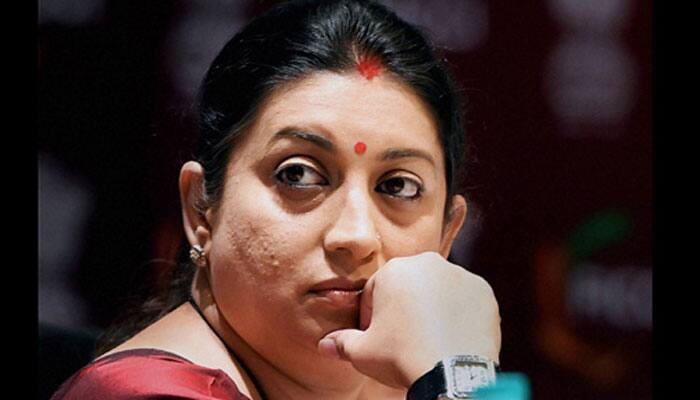
One of the youngest ministers in PM Modi's Cabinet, Human Resource Development Minister (HRD) Smriti Irani, has been often making headlines for the wrong reasons. From the scrapping of the German language in the Kendriya Vidyalayas to the celebration of December 25 as the Governance Day, to allegations of appointing people in key positions in various institutes and universities having RSS affiliations, to scrapping of the FYUP and asking – reportedly - IITs to seek her ministry's advice on MoUs, controversies have dogged her right from the time she joined office. In her defence Irani has said that spending in education during the Modi government has been more than the previous UPA regime arguing that the while in 2013-14, the utilisation was 92.9 per cent it had increased to 97.69 per cent in 2014-15. Meanwhile, the nation is awaiting a final draft of the new National Policy for Education which the HRD minister has said aims “to specifically target those students who are living in villages and could not continue their education due to lack of exposure and unavailability of resources.” But with the government completing a year in office, Irani has to be in a rush mode and not forget that the weight of educating millions of Indian students and consequently changing the country's destiny rests on her shoulders.
9/12
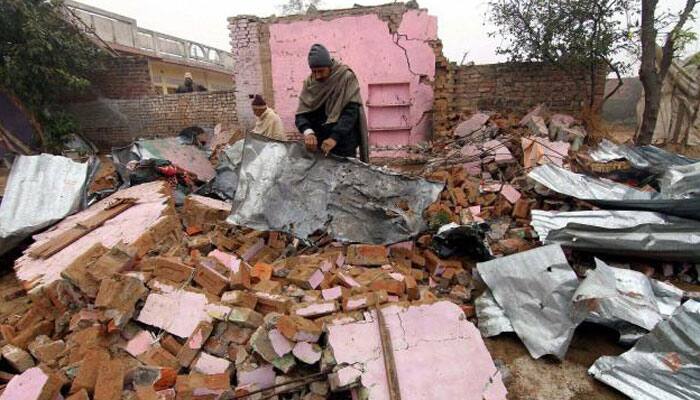
Pakistan has been a thorn for India for decades. But when PM Modi came to power, he decided to extend an olive branch to them by inviting his counterpart Nawaz Sharif to his swearing-in ceremony. However, this did not stop Pakistani aggression at the border. Pakistan has been continuously violating ceasefire over the last few months resulting in loss of lives of security forces, as well as civilians. There have also been reports of terrorists infiltrating India, with around 140 infiltration attempts reported in 2014, as per a Home Ministry data. India has retaliated aggressively by pounding Pakistani locations on the International Border and inflicting heavy casualties but one gets the feeling that this is not what PM Modi wanted. China too has been a bane for the Modi government. Chinese incursions in Ladakh have been a major cause of worry for India to say the least. Last year two major confrontations took place in Demchok and Chumar. In fact, Chinese forces were reportedly continuing with their aggressive ways even when their President Xi Jinping was visiting India and PM Modi had gone all out to be a perfect host. PM Modi did tell President Xi that peace at the border was imperative for stronger bilateral ties, but what effect it had on China is anybody’s guess.
10/12

While campaigning for the Lok Sabha polls last year, prime minister-in-waiting Narendra Modi had shown everyone dreams, including the business community. He had promised to further open up the Indian economy after years of stagnation and perceived policy paralysis under the UPA-2 government. Modi’s promises won him vote, not just from the common man but also from the business class. However, one year down the line, Modi government appears to be faltering in restoring the faith of investors and industrialists in the Indian economy. Business confidence, as per the MNI India Business Sentiment Indicator, is at a level last witnessed in April 2014, and several industrialists and corporate honchos have expressed concern over the pace with which the Modi government is removing policy bottlenecks. The Reserve Bank’s Business Expectation Index too has registered a decline in Q4 2014-15 from a three-year high in the previous quarter. The government might have, in Budget 2015, promised to boost infrastructure spending, improve ease of doing business, do away with retrospective tax (though again imposed on FIIs) and curb the use of black money, but the same has not triggered a desired increase in business activity. As Alok Shriram, president of the industry body PHD Chamber of Commerce and Industry, put it, India needs to do more to improve the environment for doing business in the country. Things are still challenging at the ground level. Dynamic policy pronouncements must be implemented with full enthusiasm.
11/12
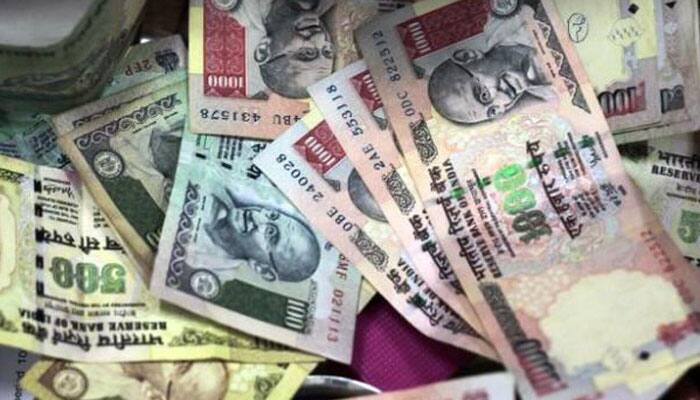
Bringing back black money was one of the main issues which the BJP used on its way to securing a thumping majority in the Lok Sabha last year. The Modi-led BJP had promised to bring back black money (illicit money stashed abroad) within 100 days of coming to power. It had even claimed that once all the black money was brought back, it would translate into around Rs 16-17 lakhs worth of benefits for every common man. The government did form a Special Investigation Team (SIT) to bring that wealth back; however, not much has moved on the ground yet. The 100-day deadline is long past and except few names the government has not been able to gather much, that too from largely unofficial routes. Due to intricacies of tax treaties, the government has not been able to reveal names of black money account holders whose identity has been revealed by foreign governments. The Supreme Court too has rapped the Centre over its failure to reveal the names. Also, the recent black money bill prepared by the government has not found many takers, with senior party leader Subramanian Swamy saying the legislation would not help Modi government fulfil its promise of bringing back unaccounted money, which as per unofficial estimates stands anywhere between $466 billion to $1.4 trillion.
12/12









